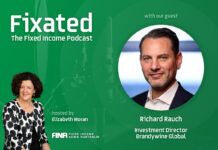
Following yesterday’s RBA rate hike, Mutual Limited CIO Scott Rundell shares his post mortem:
At its June monetary policy meeting today, the RBA elected to hike rates +25 bps, taking the cash rate to 4.10%. This is the 12th hike in the cycle, with the cash rate rising +400 bps since April last year.
The cash rate is now at levels not seen since 2011, although the rate is still -65 bps short of the previous cycles peak. Markets were pricing a 35% chance of a hike, while consensus was firmly in the pause camp (20 out of 30 economists surveyed by Bloomberg expected a pause).
They were wrong, as was I to be honest, although I did assign a 20% – 30% probability to a hike…just to hedge my bets. In the eyes of the RBA inflation remains too high at +7.0% YoY, and the board remains concerned inflation will become more firmly entrenched in people’s expectations. And they see upside risk. At which point it is harder to combat.
Overall, the statement was hawkish and carried broadly similar themes from the May statement, with a little more emphasis on wages given release of up-to-date wages data between meetings and the Fair Work Commissions decision last week, to increase award rates by 5.75%.
Key outtakes from statement
Household consumption: “a significant source of uncertainty continues to be the outlook for household consumption. The combination of higher interest rates and cost-of-living pressures is leading to a substantial slowing in household spending. Housing prices are rising again and some households have substantial savings buffers, although others are experiencing a painful squeeze on their finances…” CoreLogic housing data indicates house prices have risen three months in a row. The reference to house prices rising in the statement is new.
Wages: “wages growth has picked up in response to the tight labour market and high inflation. Growth in public sector wages is expected to pick up further and the annual increase in award wages was higher than it was last year. At the aggregate level, wages growth is still consistent with the inflation target, provided that productivity growth picks up…” The prospect of improved productivity looks challenging and will likely weigh on the board in coming months.
Inflation expectation: “the Board remains alert to the risk that expectations of ongoing high inflation contribute to larger increases in both prices and wages, especially given the limited spare capacity in the economy and the still very low rate of unemployment. Accordingly, it will continue to pay close attention to both the evolution of labour costs and the price-setting behaviour of firms.” The May statement said…” medium term inflation expectations remain well anchored, and it is important that this remains the case..” This has been removed, which is significant and signals RBA’s growing concern that inflation is running away from them.
Policy direction: “some further tightening of monetary policy may be required to ensure that inflation returns to target in a reasonable timeframe, but that will depend upon how the economy and inflation evolve. The Board will continue to pay close attention to developments in the global economy, trends in household spending, and the outlook for inflation and the labour market. The Board remains resolute in its determination to return inflation to target and will do what is necessary to achieve that.”
Also read: A Steady Ship in Stormy Waters: Banking Turmoil
The upshot – more increases to come
Given “further tightening…may be required” – the same as last month’s statement by the way – there is a good possibility cash rates will reach 4.35% in coming months, possibly higher, 4.60% even?
The last sentence indicates the board is willing to make the hard decisions if deemed necessary. In this regard, it’s worth noting this from Bloomberg this morning…”internal RBA analysis released under Freedom of Information law last month included research concluding a 4.8 per cent cash rate would bring inflation back to the central bank’s 2 to 3 per cent target by the end of next year and lift unemployment closer to its estimate of full employment, which is 4.5 per cent.” (Bloomberg).
The RBA’s current forecast for inflation to be back with target ranges is mid-2025, so six months longer than that implied in this statement, and a time frame the board seems comfortable with. Nevertheless, short of a material change in mindset, it is conceivable we’ll see cash at 4.60% – 4.85% by September 2024, and I expect we’ll see a raft of changes to forecasts in coming days or weeks.
Market reaction, hard landing inbound
The risk of a hard landing for the economy has risen as a result of today’s decision. Leading into the release of the rate decision the ASX 200 was down -0.50%. The index is now down -1.20% (4.30pm).
Bond yields have risen, with 3M bank bills +11 bps to 4.17%, while 3Y government bond yields are +8 bps higher at 3.67%, which represents a YTD high, and levels not sense since October last year.
The curve is flatter with 10Y yields +2 bps higher at 3.30%. No meaningful reaction in credit markets. Yields as at 4:30pm.

































